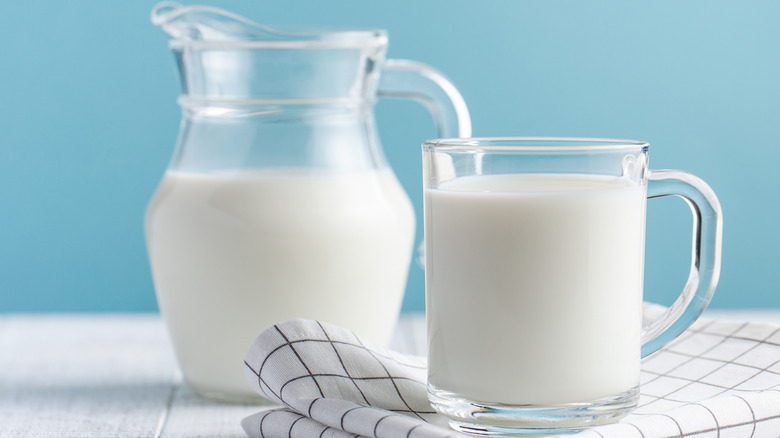The Younger Generation Doesn't Really Care About Milk
Milk consumption is falling across the country, and has been for some time — the amount enjoyed as a beverage has dropped 46% since 1975, according to USDA data. For once, young people cannot be blamed entirely for this because a downward trend is happening across all ages, but younger generations seem to be shunning milk far more thoroughly than their predecessors.
One of the obvious explanations is that young people are more aware of environmental issues and social concerns and are therefore less likely to drink dairy milk because of the contribution of cattle farming to climate change and poor treatment of cows. Globe Newswire notes that 34% of 18- to 34-year-olds consume plant-based alternatives to dairy.
However, although dairy-free alternatives are obviously impacting the perception of traditional milk, they are not a major reason for the downward trend. This means that there are more significant explanations for why younger people have gone off milk — and we've analyzed the facts to find out what's going on.
The decline of milk is deep-rooted
Milk really does have a fight on its hands to reclaim its glory days: In each decade since the 1970s, teenagers have consecutively drank less milk. One explanation is that milk simply isn't an attractive concept, harking back to the smoke-filled 1950s rather than the vibrant modern age of alluring sweet beverages. No teen wants to live the life of "The Beverly Hillbillies."
Another reason is that schoolchildren have been unable to be served whole or 2% milk since 2010, The New York Times reports, leading to young people drinking milk that just doesn't taste that good. Before the restrictions were introduced, CDC data shows that 78% of children drank whole or 2% milk, and the majority of children who drank low-fat milk were from wealthy families — suggesting the healthier options promoted by officials haven't always been affordable to everyone. Both of these factors could have reduced the willingness of young people to drink milk.
Trying to reinvigorate its reputation, marketing campaigns are positioning dairy milk as a healthy performance drink, something that exercise and video game fanatics alike can benefit from. Additionally, The New York Times notes that in 2018, 1% chocolate and strawberry milk was allowed back into schools, seemingly encouraging kids to drink any form of milk. However, since younger generations have been gradually ditching milk for years, it seems unlikely that fancy advertising is going to reverse entrenched opinions on dairy milk.

